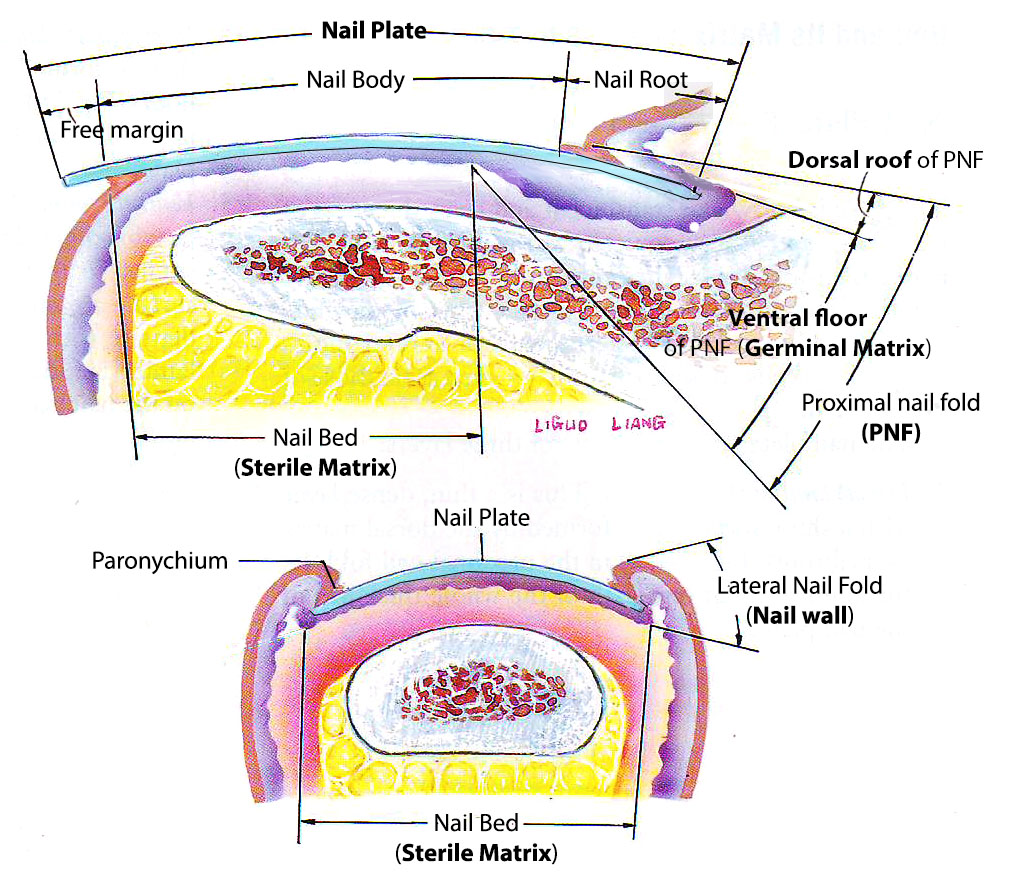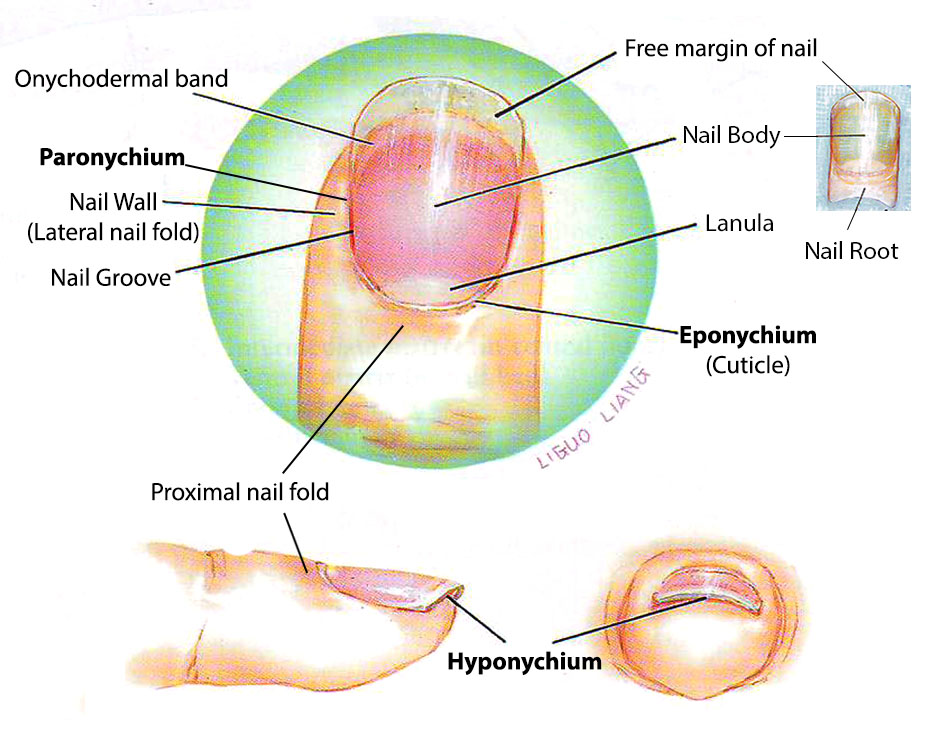The ‘nail anatomy’ is simple but very important to understand for very Plastic and Hand surgeon.
Nail is comprised of the nail plate, perionychium (consist of the nail bed with germinal matrix, proximal nail fold with sterile matrix).
1. Nail Plate
The nail plate comprises of free margin, body and root. The root is ~ 1/4th of the nail plate. On cross-section, divided into dorsal, intermediate (major part) and ventral lamina.
2. Perionychium
The nail plate sits in an incomplete, invaginated skin pouch on the dorsal aspect of the distal phalanx called perionychium.
Perionychium consists of:
A. Proximal nail fold (PNF)- consists of Germinal Matrix
It is divided into:
- Dorsal Roof or Dorsal matrix – thin ~ 4 layers of keratinocytes- gives rise to dorsal lamina of the nail plate- responsible for the surface shine.
- Ventral Floor or Intermediate Matrix – thick epithelium (> 10 layers of keratinocytes) below lanula (see below) and nail root – gives rise to the most (intermediate lamina) of the nail plate.
B. Nail bed (Ventral Matrix / Sterile Matrix)
It gives rise to the ventral lamina of the nail plate that functions as a mold for normal growth of the nail (Hence, any scar on nail bed prevents nail growth over it). It’s very thin- reveals the rich capillary vasculature if the dermis below that separates it from the periosteum of the distal phalanx.

Nail – Surface anatomy

- Hyponychium – cornified epithelium that adheres to the groove between the free margin of nail plate and the fingertip. It protects the distal edge of the nail bed.
- Onychodermal band – the most distal portion of the nail body, lighter pink in color, ? due to the epidermal thickness- hyponychium.
- Lanula – pale crescent-shaped area at the proximal part of the nail body, corresponds to the intermediate part of the germinal matrix.
- Eponychium – aka Cuticle – formed from epidermis in the distal part of dorsal roof of PNF– adheres to the nail root for protection of the germinal matrix.

Nail growth
- Rate: 0.1 mm/day
- After complete removal- takes 4-6 months to grow from PNF to distal edge.
- Affected by age, season, digit, etc. (more in young age, summer and middle finger)
Functions of Nail
- Dorsal cover of the distal phalanx.
- Magnification of delicate tactile sensations through leverage of the nail plate.
- Precise nail-to-nail pinch.
- Cosmesis.
Hope you found this post useful. Please do not hesitate to give your valuable feedback in the comments section below.
If you liked this article, please Subscribe to PlaRecon and it’s YouTube Channel for more such articles. You can also stay connected on Facebook, Twitter, and Instagram.
Reference and Image credit:
- Atlas of Hand Anatomy and Clinical Implications Hardcover – Yu MD, Chase, Strauch (2003)

Tutorials & tips in Plastic Surgery
+ Weekly updates of high-quality webinars!



